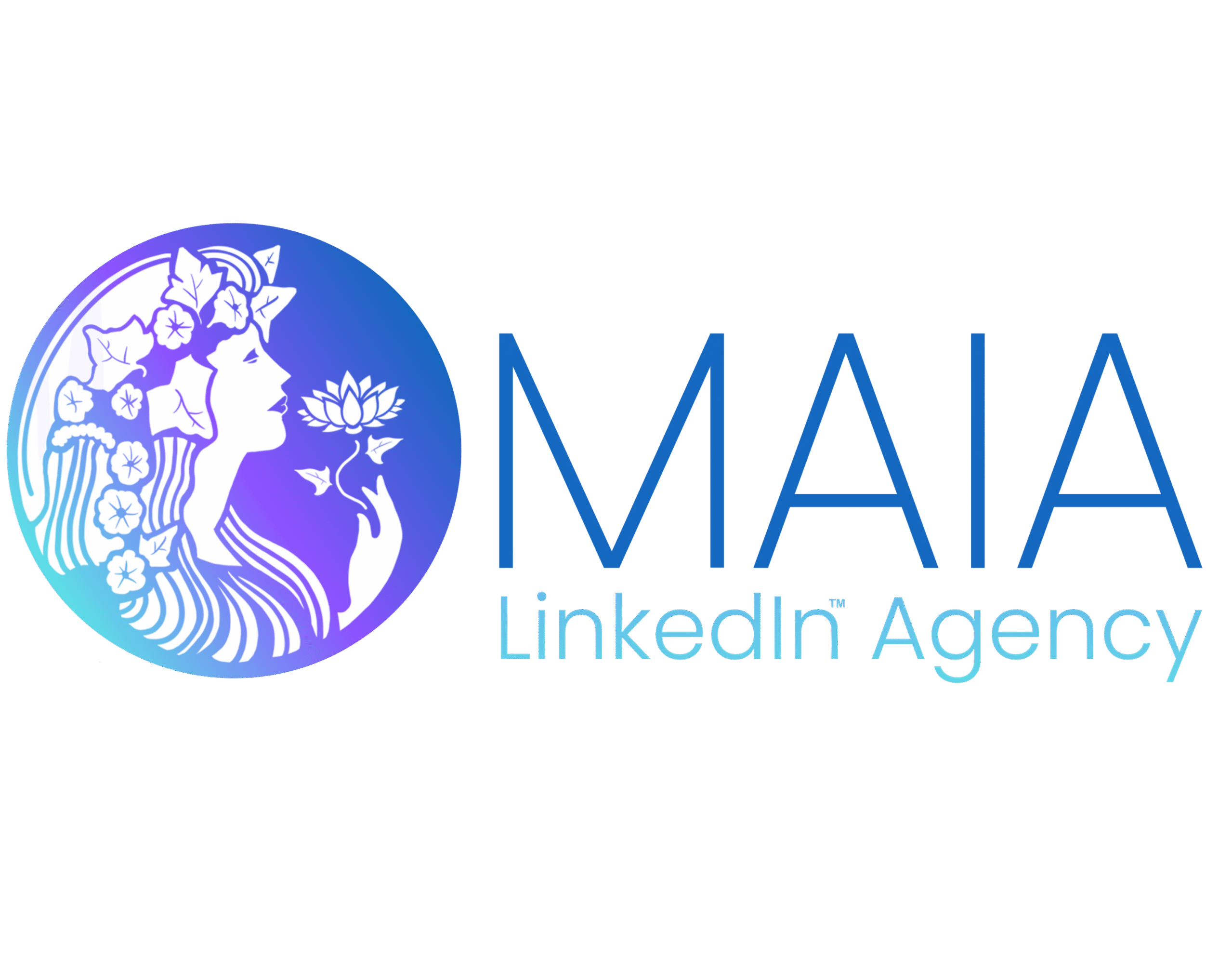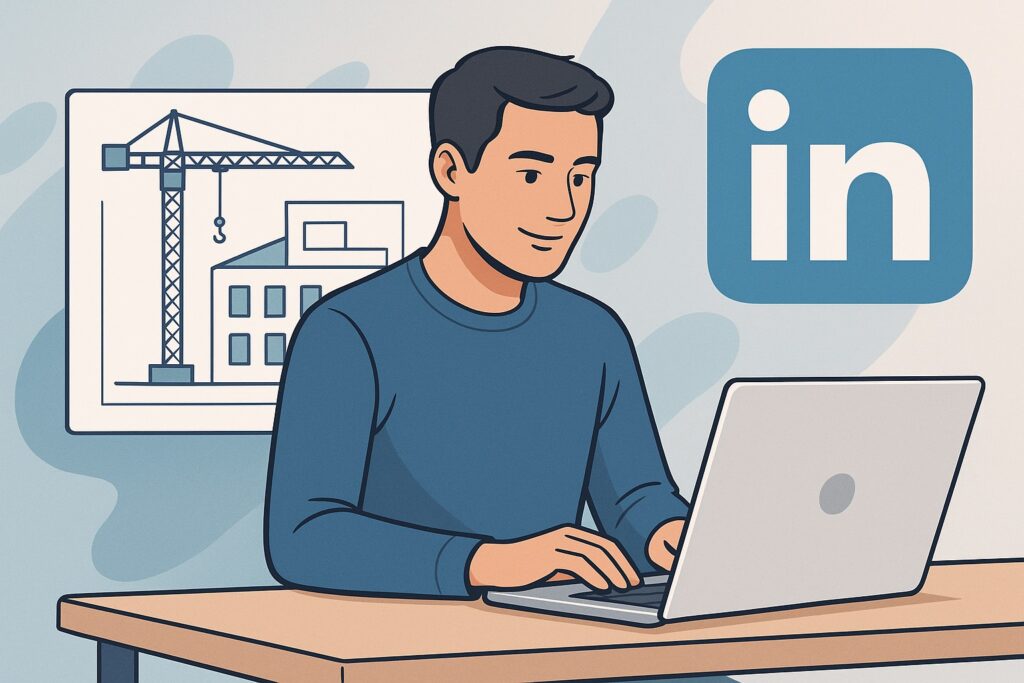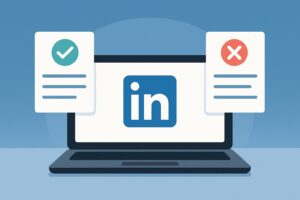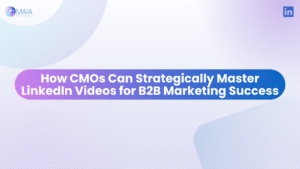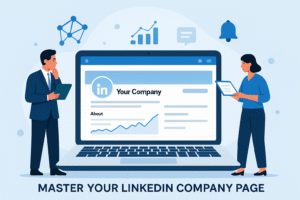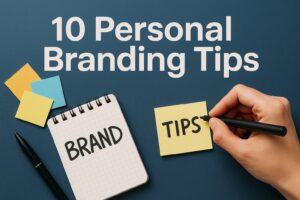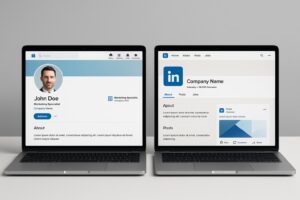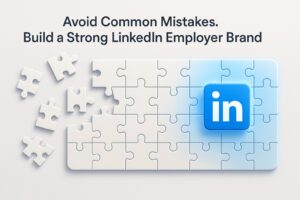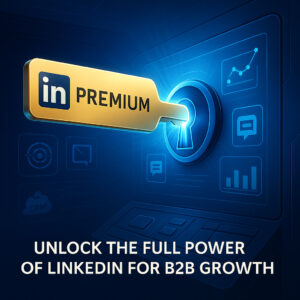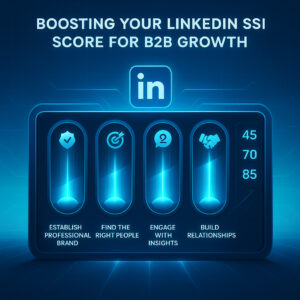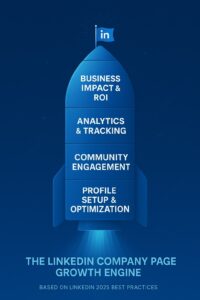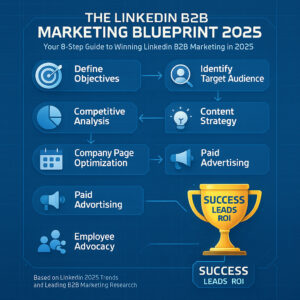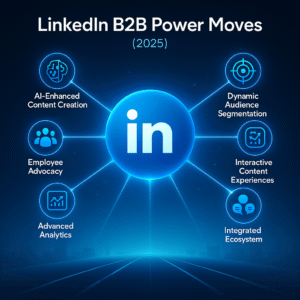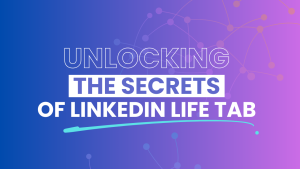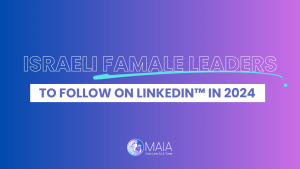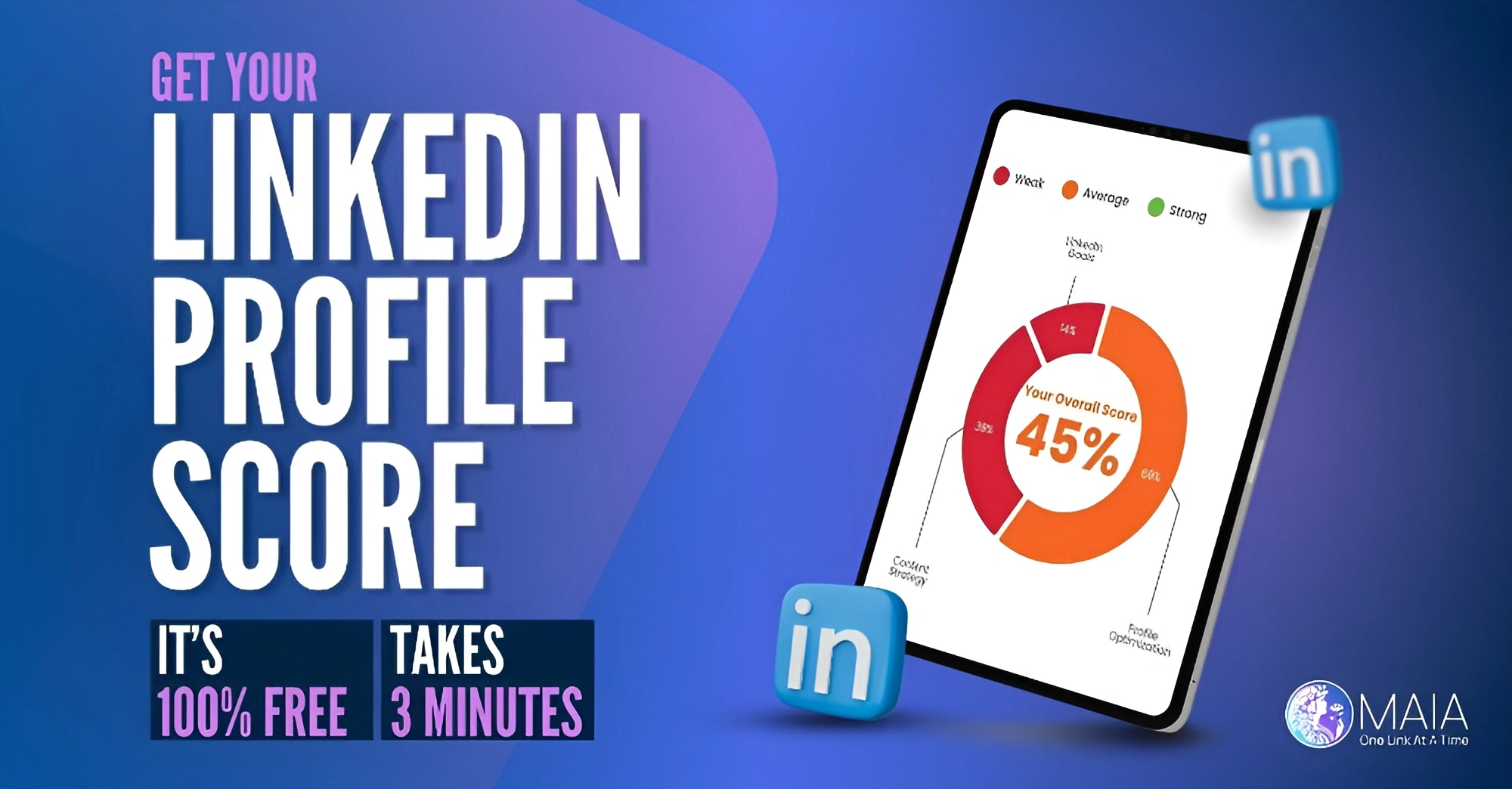The LinkedIn invitation request feature can enhance the growth of your social network and networking with potential clients, customers, and business partners.
However, this process can feel overwhelming to some users, especially those unfamiliar with the process and still trying to figure out what to do next.
This article will explain exactly how to send a LinkedIn invitation request, so you don’t make mistakes along the way.
Remember that it’s not about sending “any” invitations; it’s about expanding your network with people in a specific niche, industry, or location that are beneficial to you as a professional.
Step 1: Use the search bar to look for specific job titles to find matching profiles.
To make your search more targeted and effective, you can type a specific job title.
For example, typing manager in human resources is more effective than just manager if you’re in human resources and looking for your next manager.
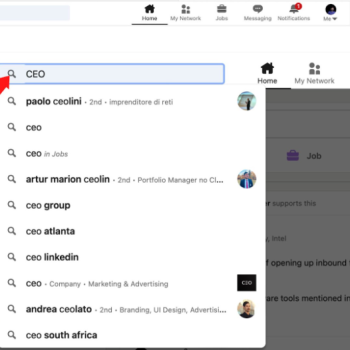
Make sure you select “people“ so that you don’t get any irrelevant search results.
Even though many profiles will pop up, you won’t have to weed through as many profiles if you can be even more specific about exactly which title you want.

Step 2: Select "2nd connections"
Step 2: Select “2nd connections”
After connecting with your first-degree connections (people you know personally), it’s time to move on to your second-degree connections.
To do this, select the “2nd connections” option on LinkedIn. Depending on the size of your network, you may find it more challenging to identify people who aren’t already in your network.
It’s important to remember that these second-degree connections may not know you as well, or at all, so you may receive fewer positive responses to your connection requests. If this happens, try asking for an introduction from one of your mutual connections or send a personalized message explaining your reason for wanting to connect.
Personalized messages can help increase the chances of acceptance, as they show that you have a specific reason for wanting to connect and are not just randomly sending requests.
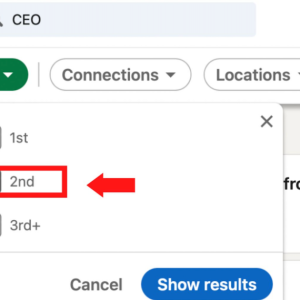
Step 3: Choose the location you want your connections to come from
Are you looking to connect with professionals in your area on LinkedIn?
One way to do this is by using the location filter in the search bar. Simply specify your location, and you will get search results from people who are located near you.
This can be especially useful if you’re looking to expand your network and potentially meet with the people you want to connect with in person.
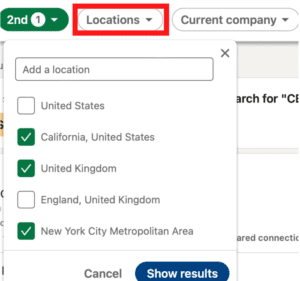
Click “show results” and use all the relevant filters to hone in on the pool of people you want.
To get the most targeted and accurate results when searching for LinkedIn connections, it’s important to be specific in your criteria. This means specifying not only the characteristics of the members you want to connect with, but also the location and industries or companies they come from. By taking the time to carefully filter your search, you’ll be able to find the right connections and build a stronger, more relevant network on LinkedIn.
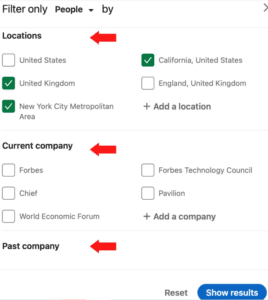
Step 4: Scroll through all the connections at the bottom of the page
There will be several pages of professionals that you can scroll through depending on the keywords or filters you choose.
Make sure to go through each of them, so you don’t miss any interesting connections.
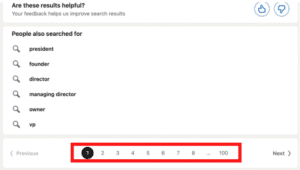
Step 5: Choose which profiles you want to send invitations to
When you’re ready to send out requests, you can find a “Connect” button beside each person’s name.
All you have to do is click. But never connect without…looking at step 6

Step 6: Add a personalized note
It’s time to add a personal touch to your message.
Don’t underestimate how much people appreciate personalized messages, whether used in an email or on social media.
For example, if you recently attended a webinar or workshop and liked it, you can start with something like:
- Hello [name]! I was excited to see you speak at [insert event here]. I thought we might be able to help each other out!
- Hello [name], I came across your profile and was impressed by your experience and background in [industry]. I’d love to connect and potentially learn more about your journey and insights in the field. Would you be open to connecting on LinkedIn?
- Hi [name], I noticed that we have a mutual connection in [person] and I thought it might be beneficial for us to connect as well. I’m always looking to expand my network and learn from professionals in [industry], and your profile caught my attention. Would you be interested in connecting on LinkedIn?
- Hello [name], I saw that you recently published an article on [topic] and found it really insightful. I’m always looking to stay updated on the latest trends and ideas in [industry], and I think we could benefit from connecting on LinkedIn. Would you be open to it?
- Hello [name], I came across your profile while searching for professionals in [industry] and was impressed by your experience and the projects you’ve worked on. I particularly enjoyed reading about your involvement in [project] and the results you achieved. I’d love to connect and potentially learn more about your journey and insights in the field. Would you be open to connecting on LinkedIn?
It’s important to take the time to review their LinkedIn activity in order to learn more about their interests and preferences. By checking out their activity, you can see what they post about and engage with, which can give you valuable insights that you can use to tailor your message and make it more personalized and effective.
In addition, using someone’s name can tap into the psychological phenomenon known as the name letter effect, which refers to the positive bias that people have towards things that are associated with their own name, including the sound and appearance of their name.
By using their name when reaching out and taking the time to review their LinkedIn activity, you can create a more positive and personalized connection and potentially improve the effectiveness of your request.

Bonus tips:
● Send follow-up messages and CTAs when your LinkedIn invitation gets accepted.
Sending a LinkedIn invitation request is the first step in building a professional relationship. It’s important to follow up and consistently communicate with your new connections in order to build rapport and establish a mutually beneficial relationship.
After accepting your invitation, be sure to thank them for accepting or express your appreciation for their time. If you’ve had a chance to chat with them, send them a quick message thanking them for their time and letting them know that you enjoyed getting to know them better. Here are some examples of LinkedIn message templates that you can use:
- Thank you for accepting my invitation to connect on LinkedIn. It was great getting to chat with you and learn more about your professional background and experiences. I really enjoyed our conversation and appreciate the time you took to speak with me.
- Hi [Name], thanks for accepting my connection request! I’m excited to connect with you and learn more about your professional background and experiences. Do you have any recommendations for LinkedIn groups or events that I should check out?
- Hi [Name], I’m glad we’re now connected on LinkedIn. I’m interested in learning more about [company] and the work you do there. Do you have any advice on how to get involved or get noticed at the company?
- Hi [Name], thanks for accepting my LinkedIn invitation. I’m always looking for new opportunities and staying up-to-date on industry trends. Do you have any job openings or know of any companies that are hiring in [industry]?
- Hi [Name], thanks for accepting my LinkedIn invitation and for being a part of my professional network. I’m always looking to learn from others and expand my knowledge in the industry. Would you be open to chatting further and sharing some of your experiences and insights with me? I’d appreciate any advice or guidance you have to offer.
- Thank you so much for accepting my LinkedIn invitation and for taking the time to chat with me. It was a pleasure getting to know you and learning more about your professional background and experiences. Your insights and advice were incredibly valuable, and I’m grateful for the opportunity to learn from you. I’m looking forward to staying in touch and keeping up with your work in the future.
Remember to also include a call-to-action (CTA) in your follow-up messages to encourage further engagement and to continue building the relationship. Some examples of CTAs that you can use include: asking for recommendations for LinkedIn groups or events to join, asking for advice or tips, asking for advice on how to get involved or get noticed at their company, or asking about job openings or companies that are hiring in your industry.
● Withdraw an unanswered LinkedIn invitation request
If you’ve sent connection requests to people on LinkedIn and haven’t received a response, it’s okay to withdraw requests. This demonstrates to LinkedIn that you are selective in your connections and have carefully screened those you reach out to.
However, it is important to keep track of the invitations you withdraw, as you will not be able to send a new connection request to the same individual for 3 weeks. Additionally, LinkedIn may notice if you are trying to connect with people who do not know you and penalize you by lowering your LinkedIn Social Selling Index (SSI) score, which is the number LinkedIn uses to measure your performance as a social seller. Therefore, it is generally best to withdraw outstanding requests that have not been accepted after a month.
Conclusion
Connecting with others on LinkedIn is a crucial step in building your professional network and expanding your reach. Luckily, it’s easy to do. This is what we covered:
- After setting up your account, navigate to the profile of the person you’d like to connect with.
- Click the “Connect” button and choose “Send an invitation.”
- Write a personalized note explaining why you’d like to connect. This can be a brief message highlighting your shared interests or professional goals.
- Click “Send invitation.”
In just a few minutes, you can send a connection request to anyone on LinkedIn. However, it’s important to note that LinkedIn has strict policies in place regarding the number of connection requests and invitations that can be sent per day. The exact number varies depending on your account type and activity level, but it’s generally recommended to send no more than 20-25 per day.
It’s important to adhere to LinkedIn’s policies regarding the number of connection requests and invitations that can be sent per day, as well as the use of automation. To avoid being banned from the platform, be sure to follow these guidelines.
Regardless of which route you choose, remember that building your network takes time and effort, but the benefits are well worth it.
————————————————————————————–
If you’re looking for professional assistance with growing and maintaining your LinkedIn network, check out MAIA Digital. We specialize in personal profile optimization and B2B marketing on LinkedIn through holistic company page management. As a LinkedIn agency, we work with organizations, high-tech companies, and startups on their marketing, content creation, and recruiting activities on LinkedIn.
If you have any questions or inquiries, don’t hesitate to contact us.
